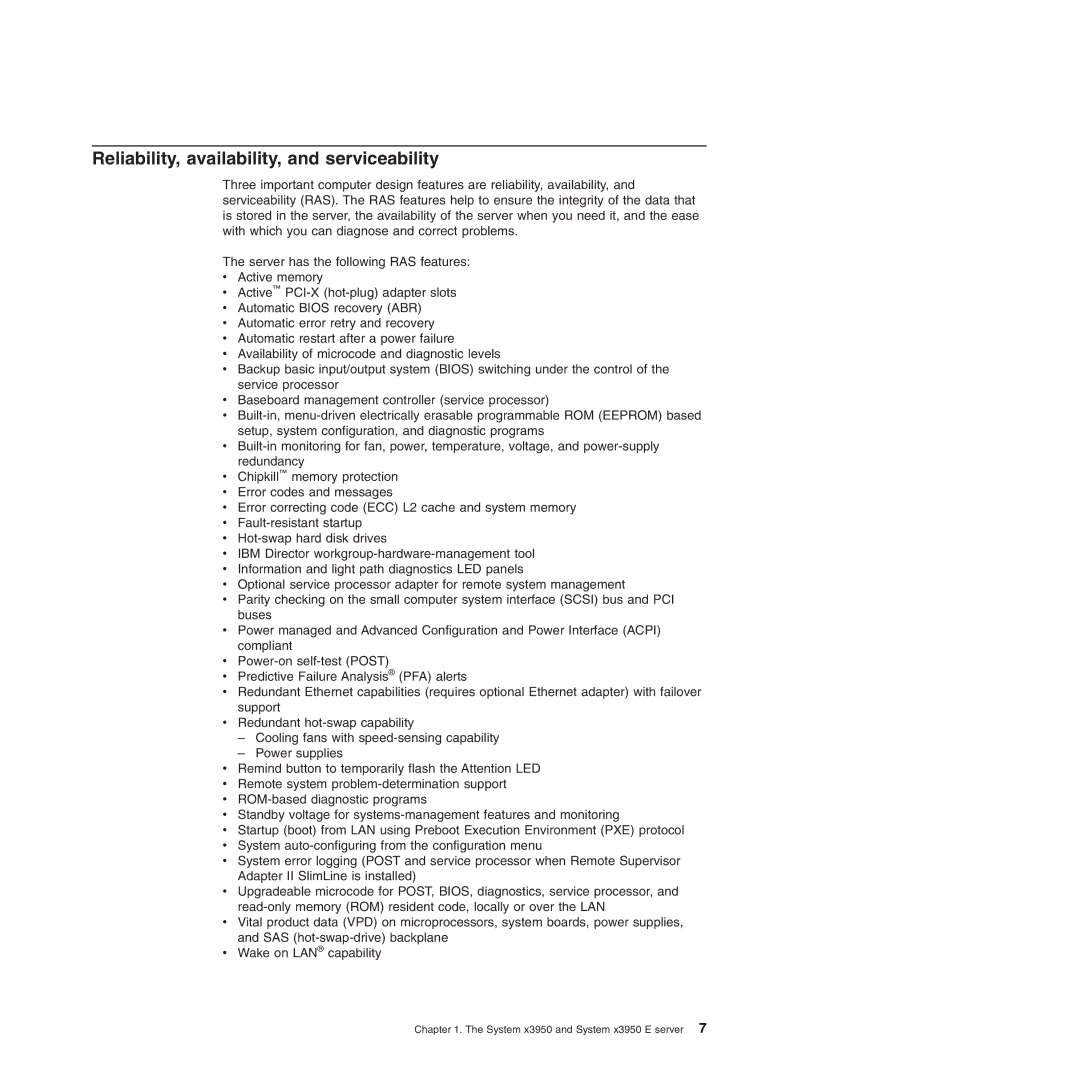Reliability, availability, and serviceability
Three important computer design features are reliability, availability, and serviceability (RAS). The RAS features help to ensure the integrity of the data that is stored in the server, the availability of the server when you need it, and the ease with which you can diagnose and correct problems.
The server has the following RAS features:
vActive memory
vActive™
vAutomatic BIOS recovery (ABR)
vAutomatic error retry and recovery
vAutomatic restart after a power failure
vAvailability of microcode and diagnostic levels
vBackup basic input/output system (BIOS) switching under the control of the service processor
vBaseboard management controller (service processor)
v
v
vChipkill™ memory protection
vError codes and messages
vError correcting code (ECC) L2 cache and system memory
v
v
vIBM Director
vInformation and light path diagnostics LED panels
vOptional service processor adapter for remote system management
vParity checking on the small computer system interface (SCSI) bus and PCI buses
vPower managed and Advanced Configuration and Power Interface (ACPI) compliant
v
vPredictive Failure Analysis® (PFA) alerts
vRedundant Ethernet capabilities (requires optional Ethernet adapter) with failover support
vRedundant
–Cooling fans with
–Power supplies
vRemind button to temporarily flash the Attention LED
vRemote system
v
vStandby voltage for
vStartup (boot) from LAN using Preboot Execution Environment (PXE) protocol
vSystem
vSystem error logging (POST and service processor when Remote Supervisor Adapter II SlimLine is installed)
vUpgradeable microcode for POST, BIOS, diagnostics, service processor, and
vVital product data (VPD) on microprocessors, system boards, power supplies, and SAS
vWake on LAN® capability
Chapter 1. The System x3950 and System x3950 E server 7
